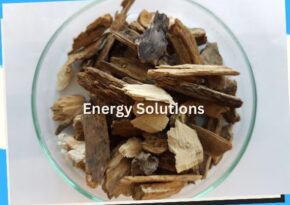
🔋 Powering Efficiency: Explore Kinetic Energy Recovery Systems (KERS) in Transportation! 🚀
🔋 Powering efficiency in motion! Kinetic Energy Recovery Systems (KERS) in transportation offer cutting-edge solutions that optimize energy usage. Experience smoother, eco-friendly travel with this revolutionary technology. 🚀 #TransportationTech #EnergyRecovery
Riding the Wave of Innovation: Kinetic Energy Recovery Systems (KERS) in Transportation 🚗⚡️
In transportation, the pursuit of energy efficiency and sustainability has given rise to Kinetic Energy Recovery Systems (KERS). These innovative technologies capture and utilize the otherwise wasted kinetic energy during braking or deceleration, paving the way for more efficient and eco-friendly modes of travel.
Unveiling Kinetic Energy Recovery Systems
KERS revolves around converting kinetic energy, typically dissipated as heat during braking, into a form that can be stored and reused. In transportation, this technology captures the energy generated when a vehicle decelerates, stores it for later use, and enhances overall energy efficiency.
Applications and Advantages
The integration of KERS in transportation has far-reaching benefits. This technology reduces fuel consumption and greenhouse gas emissions from hybrid and electric vehicles to conventional automobiles. By supplementing the powertrain with additional energy derived from braking, vehicles become more efficient and environmentally friendly.
Types of KERS
- Mechanical Systems: These systems store kinetic energy in mechanical components like flywheels or springs, which can be re-engaged to assist in acceleration.
- Electric Systems: Utilizing electric motors or generators, these systems convert kinetic energy into electrical energy, storing it in batteries or capacitors for later use in powering the vehicle.
Advancements and Innovations
- Improved Efficiency: Ongoing research aims to enhance the efficiency of KERS, maximizing energy capture and storage capabilities during braking events.
- Integration with EVs: Innovations focus on seamless integration of KERS with electric vehicles (EVs) to extend their range and efficiency further.
- Smart Control Systems: Advanced control algorithms optimize energy recovery, ensuring smooth transitions between braking and acceleration phases.
- Lightweight Materials: The development of lightweight and durable components enhances the effectiveness of KERS without adding significant weight to vehicles.
Challenges and Progress
While KERS technology showcases immense potential, challenges exist, including system complexity, cost, and integration with various vehicle types. Continuous research and development endeavors seek to address these challenges, striving for more affordable and efficient solutions.
Future Prospects and Impacts
The future of KERS in transportation appears promising. As the automotive industry gravitates towards sustainable solutions, the widespread adoption of KERS has the potential to significantly reduce fuel consumption and emissions, contributing to a more eco-friendly transportation landscape.
Embracing Sustainable Travel
Kinetic Energy Recovery Systems represent a paradigm shift in transportation, where energy that was once lost is now repurposed, offering a more sustainable and efficient way to navigate our roads.
Conclusion
Kinetic Energy Recovery Systems in transportation exemplify the marriage of innovation and sustainability. As the world looks toward greener travel solutions, KERS stands as a testament to our ability to harness previously wasted energy, driving us toward a more sustainable future.
Key Phrases:
- Kinetic Energy Recovery Systems (KERS)
- Energy-efficient transportation
- Brake energy regeneration
- Vehicle kinetic energy capture
- Sustainable transportation solutions
- KERS in automotive technology
- Eco-friendly braking systems
- Kinetic energy reuse in vehicles
- Energy-efficient travel innovation
- Regenerative braking technology
Best Hashtags:
- #KERSinTransportation
- #EnergyEfficientTravel
- #BrakeEnergyRegeneration
- #SustainableTransportTech
- #EcoFriendlyBraking
- #KineticEnergyReuse
- #RegenerativeBraking
- #EfficientVehicleTech
- #RenewableTransportation
- #GreenTravelInnovation
Kinetic Energy Recovery Systems don’t just make transportation more efficient—they’re a transformative step toward a future where our vehicles actively contribute to conserving energy and minimizing environmental impact.
Save/Share this story with QR CODE
Disclaimer
This article is for informational purposes only and does not constitute endorsement of any specific technologies or methodologies and financial advice or endorsement of any specific products or services.
📩 Need to get in touch?
Feel free to Email Us for comments, suggestions, reviews, or anything else.
We appreciate your reading. 😊Simple Ways To Say Thanks & Support Us:
1.) ❤️GIVE A TIP. Send a small donation thru Paypal😊❤️
Your DONATION will be used to fund and maintain NEXTGENDAY.com
Subscribers in the Philippines can make donations to mobile number 0917 906 3081, thru GCash.
3.) 🛒 BUY or SIGN UP to our AFFILIATE PARTNERS.
4.) 👍 Give this news article a THUMBS UP, and Leave a Comment (at Least Five Words).
AFFILIATE PARTNERS

World Class Nutritional Supplements - Buy Highest Quality Products, Purest Most Healthy Ingredients, Direct to your Door! Up to 90% OFF.
Join LiveGood Today - A company created to satisfy the world's most demanding leaders and entrepreneurs, with the best compensation plan today.



 Business Technology, Finance Technology & Information Technology
Business Technology, Finance Technology & Information Technology




